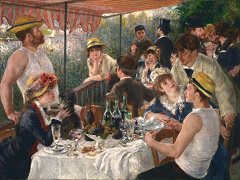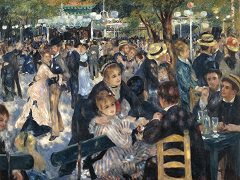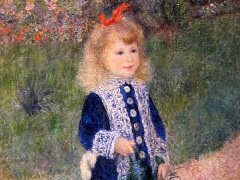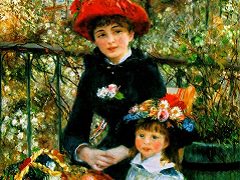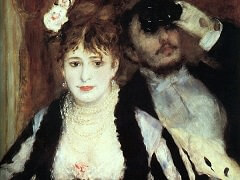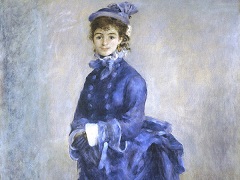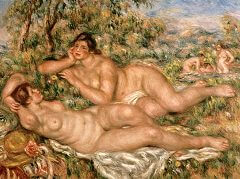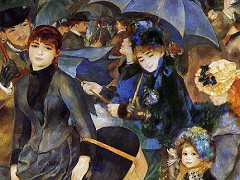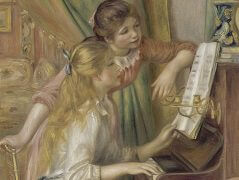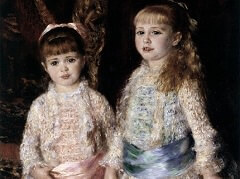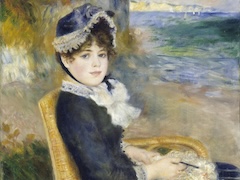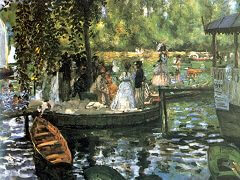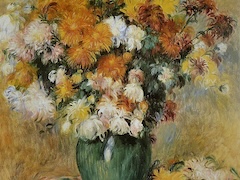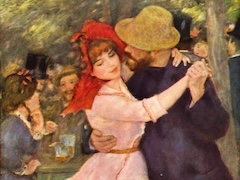Pont Neuf - by Pierre-Auguste Renoir
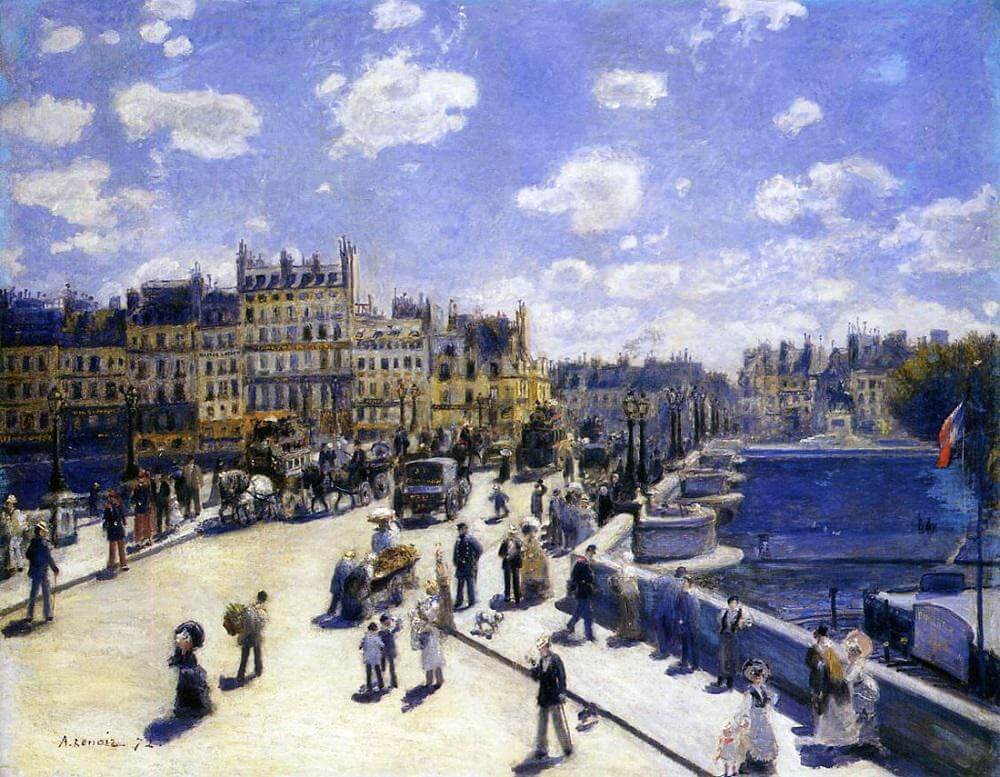
In this masterpiece of the painting of Light, we have the happiest qualities of a bright summer day in Paris. How wonderfully Renoir has caught the vibrant many-sidedness of the city! In a most extraordinary way we are made to sense the large and simple compositional structure of the canvas, while at the same time we see the multitude of little details and contrasts of color and shape. The world is made of spots: buildings, windows, chimneys, flags, vehicles, statues, people; it is made of sky and clouds, light and air, of stone and water and foliage.
Despite the illusion of dazzling light, the picture is cool in tonality, even in the glare of the street. Yet within this larger simplicity, the whole palette is engaged: the yellows, reds, blues, violets, greens, blacks, and whites. There is an incredible richness of hue in every section: a good example is the varied blues of the bridge structure in the lower right.
The picture is divided into three big regions, each with its distinctive color, silhouette, and type of variation. The sky - a light zone - is spotted with irregular clouds, finely graded as to size, shape, and luminosity. The architectural mid-zone is the darkest: on the left a complicated grid of beautifully varied horizontal and vertical lines; to the right the broader elements of bridge and water, with strong diagonals leading to the extreme lower right corner. The lowest zone, the street, is the lightest of all, and here the promenaders and their shadows, scattered and free, repeat the verticals and diagonals of the mid-zone. If the reader will turn the picture upside down, many of these relationships will appear more clearly.
Renoir daringly makes the ground much whiter than the sun-drenched sky; he deliberately accepts the glare in his eyes to paint what is perhaps one of the first realistically back-lighted landscapes in the history of art. He creates heat through coolness, the chaos of a busy street through order, and under his brush the grimy commonplaces of the city sparkle like jewels.

